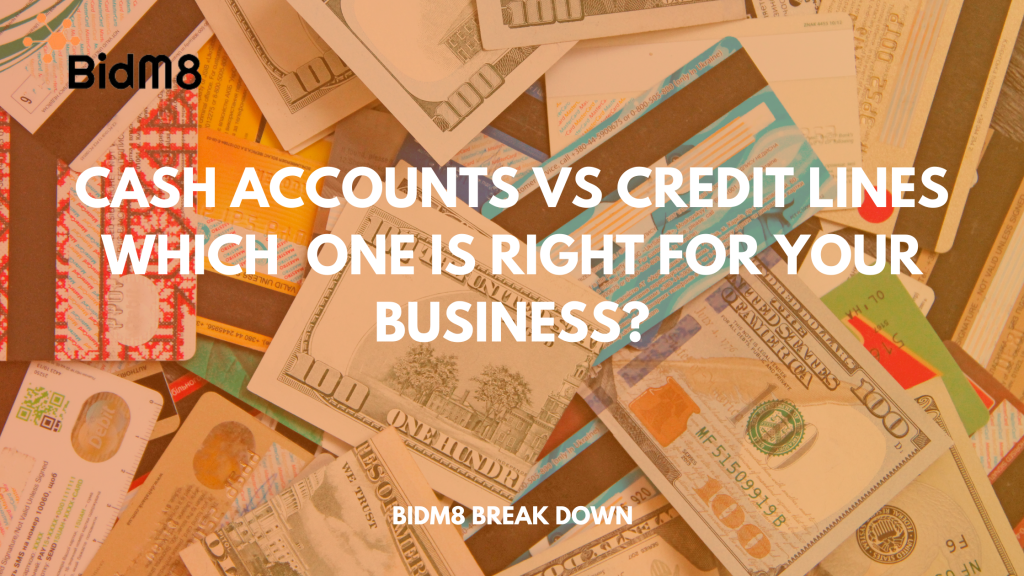
In the construction and contracting world, staying on top of material costs is critical to maintaining cash flow and keeping projects moving. Building centers offer two main ways to buy supplies: cash accounts and credit lines. Each has its own pros and cons, and understanding the difference can help you decide which approach suits your business needs best.
We’ll dive into the advantages and disadvantages of both options—and let you know how you can get a single line of credit across multiple suppliers to streamline your purchasing even further.
Advantages of Cash Accounts:
- No Interest Costs: One major advantage of a cash account is that you avoid interest. Paying cash (whether by actual cash, debit, or direct payment) keeps things straightforward with no hidden fees or extra costs.
- Controlled Spending: Cash accounts help you keep a tight rein on your budget, making it easier to avoid overspending. You see exactly what’s in your account, so you can manage your purchases accordingly and stick to your budget.
- Potential Discounts for Immediate Payment: Building centers sometimes offer small discounts to cash account holders, especially for large purchases. This can help bring costs down even more, which adds up over time.
- Financial Stability: By operating with a cash account, you avoid debt and stay financially stable. This is especially helpful for smaller businesses or those just starting, as it limits financial risk and simplifies cash flow management.
- Simpler Bookkeeping: Cash accounts require less paperwork and simpler bookkeeping, freeing up time and resources to focus on project work instead of managing statements or reconciling credit accounts.
Disadvantages of Cash Accounts:
- Limits on Purchasing Power: If your project load grows, cash can quickly become a limiting factor. You may need to delay purchases or pause projects until you have the necessary funds, slowing down progress.
- Reduced Flexibility: Cash accounts don’t offer much flexibility when big jobs come up. You might lose out on opportunities if you can’t access materials quickly because of limited cash flow.
- Missed Opportunities for Growth: Waiting for cash to make every purchase can hold back growth. If your business is ready to expand, a lack of financing can slow down your momentum.
Credit Lines: The Flexible, Growth-Ready Option
Advantages of Credit Lines:
- Enhanced Purchasing Power: With a credit line, you have access to additional funds immediately. This can help you take on larger projects or handle more jobs at once, without draining your cash reserves.
- Better Cash Flow Management: Credit lines allow you to pay for materials even if cash flow is temporarily tight, which is especially useful when waiting on client payments or handling seasonal lulls in income.
- Fuel for Growth: If you’re in a growth phase, a credit line lets you move quickly. You can secure materials for multiple projects, invest in equipment, or hire additional staff—all without waiting to save up cash first.
- Opportunity to Build Business Credit: Using and paying down a credit line helps establish your company’s credit profile, building a record of trust with future lenders and suppliers alike.
Disadvantages of Credit Lines:
- Interest Costs: The downside to a credit line is the interest, which can be significant if balances aren’t paid down regularly. Interest charges can add up, cutting into profit margins, especially if the credit line is used extensively.
- Risk of Overborrowing: With credit readily available, it can be tempting to overspend or take on more debt than your business can comfortably manage. Monthly payments, interest, and fees can add up, so managing credit wisely is key.
- More Complex Bookkeeping: Credit accounts require more diligent bookkeeping to stay on top of balances, payments, and interest. Managing these accounts may require extra resources or assistance from a bookkeeper.
- Possible Strain on Cash Flow: Regular credit payments can put pressure on cash flow, which can be challenging during leaner months or periods of delayed payments from clients.
What Works Best for Each Stage of Business?
For businesses in the early stages or those that prefer to minimize financial risk, a cash account is often the best choice. Cash accounts are simpler to manage, keeping your finances straightforward and keeping you debt-free. This option is especially practical for smaller projects or businesses with less predictable cash flow.
If you’re ready for growth or taking on bigger projects, a credit line offers greater flexibility to move fast. Expanding businesses can leverage credit to buy materials for multiple projects at once or to cover upfront costs when taking on larger contracts.
Unlock a Single Line of Credit Across Multiple Suppliers
Managing separate accounts with multiple suppliers can become a hassle, especially for companies juggling several projects at once. At BidM8, we offer a solution: one single line of credit you can use across multiple suppliers. This simplifies your purchasing and lets you get materials from any approved supplier using just one credit account. No more balancing numerous accounts or managing different payment schedules—just a streamlined credit solution that grows with you.
You can access up to 800,000 CAD in credit within 48 hours at a 12.99% APR, giving you the financial power to scale your business without delay.
If this sounds like the right move for your company, get in touch at info@bidm8.com to learn more about our credit program and see how we can help support your business growth.

